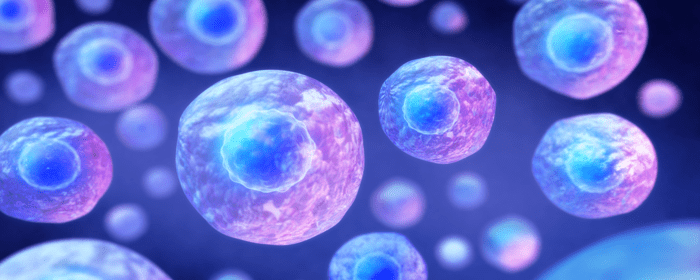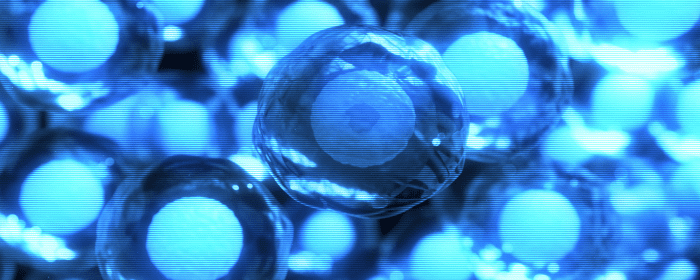
by admin | Jan 24, 2024 | Neural Stem Cells, Stem Cell Research, Stem Cell Therapy
Neuropathic pain (NP) occurs when the nerves located either inside or outside of the brain and spinal cord are damaged by a lesion or a condition. To date, pharmacological and surgical treatments to address NP have focused on providing symptomatic relief without treating the underlying cause of the condition. These treatment approaches have not been overwhelmingly successful with over 50% of NP patients attaining adequate pain relief.
Recently, an increasing amount of pre-clinical and clinical research has demonstrated cell transplantation-based therapy for NP to be a promising treatment alternative.
In this review, Yin et al. summarize the use of cell grafts for the treatment of NP, synthesize the latest advances and adverse effects, and discuss possible mechanisms to further the development of cell transplant-based therapies for NP.
Neural stem cells (NSCs) demonstrate the ability to divide, self-renew, and differentiate into neurons, astrocytes, and oligodendrocytes; they are also present in a wide array of tissues throughout the body. Considering they are capable of differentiating into neurons and glial, NSCs are considered an ideal candidate cell for replacing damaged nerve cells and delivering trophic factors to the site of lesions contributing to NP. Additional studies have demonstrated NSCs ability to regenerate nerves, offer neuroprotective effects, and secrete a number of factors that enhance the survival of motor and sensory neurons. NSCs transplantation coils also ease NP caused by peripheral nerve injury, a potential benefit that has been observed in animal models.
Olfactory ensheathing cells (OECs) are glial cells that surround and enclose the olfactory nerve bundle and possess the unique ability to transgress the peripheral nervous system (PNS) and central nervous system (CNS). Considering OECs have been shown to have neuro-regenerative functions, they are also considered to be a good choice for treating nerve injury and NP. Studies using animal models have confirmed that OECs transplantation could promote motor recovery and mitigate pain. Although OECs have good prospects of being used for treating NP, the authors call for additional research with longer observation time to verify their long-term effects and safety.
Mesenchymal stem cells (MSCs) can be obtained from a wide variety of sources and can be induced to differentiate into endoderm, mesoderm, and ectoderm cell lines. MSCs are often used for the treatment of diseases involving neuroinflammatory components and have been shown in animal studies to potentially alleviate NP symptoms.
Other cell therapies currently being evaluated for use as a treatment for NP include bone marrow mononuclear cells, GABAergic cells, and genetically modified cells.
The authors conclude that, despite the small number of clinical studies and the lack of systematic evidence, cell therapy as a treatment alternative for NP should be further explored. Specifically, further research should examine the optimal transplantation route, transplantation timing, number of transplanted cells, and transplantation survival rate.
Source: “Cell therapy for neuropathic pain – Frontiers.” 27 Feb. 2023, https://www.frontiersin.org/articles/10.3389/fnmol.2023.1119223.

by admin | Jan 18, 2024 | Multiple Sclerosis, Mesenchymal Stem Cells, Stem Cell Research, Stem Cell Therapy
Multiple sclerosis (MS) is a progressive autoimmune disease that affects the brain, spinal cord, and central nervous system (CNS). Affecting an estimated 3 million people worldwide, MS is typically characterized by an autoimmune response that results in inflammation, demyelination, and degeneration of axons.
Most patients who are diagnosed with MS demonstrate a disease progression characterized by periods of relapse and remission that can last for an extended duration.
There is no treatment that can yet address the various rates of MS progression. Additionally, current therapeutic approaches are designed to address the shortening of the duration of recovery following an attack, mitigating the progression of the disease, and attenuating the symptoms associated with MS.
Recently, mesenchymal stem cells (MSCs) have shown various ranges of effectiveness when used for treatment of autoimmune diseases in clinical trials. However, most of the trials utilizing MSCs for this purpose have been reported for a variety of reasons, including a low number of treated subjects, different doses used in the studies, the feasibility of autologous or allogeneic transplantation, and the unclear therapeutic window after the treatment effect.
Considering this, the purpose of Islam et al.’s systematic review and meta-analysis (SRMA) was to provide a comprehensive assessment of the effectiveness and safety of MSC therapy in individuals diagnosed with MS. To achieve this, the authors identified studies that reported on the efficacy and safety of MSC therapy in human patients with MS based on the changes in the Expanded Disability Status Scale (EDSS) score from baseline to follow-up period. This screening process resulted in a total of 30 studies being incorporated into the systematic review and 22 studies being included in the subsequent meta-analysis.
Islam et al. reported that, following MSC therapy, it was observed that 40.4% of the patients with MS experienced improvement; 32.8% of patients remained stable while 18.1% experienced a worsening of their condition. In terms of the safety of MSC therapy, the authors reported that while no major complications were observed, headaches (57.6%), fever (53.1%), urinary tract infections (23.9%), and respiratory tract infections (7.9%) were the most commonly reported adverse events.
While further research, the development of new technology, optimization of MSC doses, and larger clinical trials are needed to fully evaluate the use of MSC therapy in the treatment of MS, the authors conclude that the results of this SRMA indicate that MSC therapy seems to be an efficacious therapeutic strategy for treating patients with MS.
Source: Islam MA, Alam SS, Kundu S, Ahmed S, Sultana S, Patar A, Hossan T. Mesenchymal Stem Cell Therapy in Multiple Sclerosis: A Systematic Review and Meta-Analysis. Journal of Clinical Medicine. 2023; 12(19):6311. https://doi.org/10.3390/jcm12196311

by admin | Jan 10, 2024 | Spinal Cord Injury, Stem Cell Research, Stem Cell Therapy
Spinal cord injury (SCI) is a devastating pathological condition affecting motor, sensory, and autonomic function. Additionally, recovery from a traumatic SCI (TSCI) is challenging due to the central nervous system’s limited capacity to regenerate cells, myelin, and neurological connections.
While traditional therapeutic treatments have proven ineffective in assisting in recovery, mesenchymal stem cells (MSCs) hold significant promise for the treatment of TSCIs.
As part of this systematic review, Montoto-Meijide et al. analyze the efficacy, safety, and therapeutic potential of MSC-based cell therapies in TSCI.
Specifically, the authors identified 22 studies fitting the objectives of this review, which provided the information needed to analyze changes in AIS (ASIA Impairment Scale) grade; to study changes in ASIA sensory and motor score; to evaluate chances in neurophysiological and urodynamic parameters; to identify changes in neuroimaging tests; and to test for the existence of adverse effects of MSC therapy.
Typically occurring as a result of trauma related to accidents or falls, TSCIs consist of two phases, a primary and a secondary phase. Considering the progression of SCI from the primary to secondary phase, the development of a therapeutic neuroprotective approach to prevent secondary injury continues to be a priority in both clinical and basic research.
Considering this, MSCs are currently one of the most promising therapeutic options for TCI, primarily due to their capacity for neuronal differentiation and regeneration, as well as their anti-apoptotic, anti-inflammatory, and angiogenic properties.
The 22 studies analyzed as part of this review included 463 patients. When analyzed in terms of the objectives listed above, Montoto-Meijide et al. reported that in controlled studies patients who received MSC therapy improved their AIS by at least one grade, with most studies also demonstrating improvement in sensory cores and motor scores.
In terms of neuroimaging evidence, the authors reported decreased lesion cavity size and decreased lesion hyperintensity. In addition, one-third of trials reported mild or moderate adverse effects related to the route of administration, and no reported serious treatment-related adverse effects.
The authors of this review reported that their results were consistent with the findings of other recent meta-analyses conducted by other researchers and were also consistent with studies that used a large number of patients but were not included in their review.
In addition, the authors also raise several interesting points that required further study, including determining the ideal stem cell type to use, identifying the most effective route and dose of administration, and finding out which degree and stage of development of the TSCL is most receptive to MSC therapy.
While MSC therapy continues to demonstrate promising potential results, Montoto-Meijide et al. also highlight future potential therapies currently in development. These therapies include gene therapies, nanomaterials, and neurostimulation combined with rehabilitation; all three of these potential treatments have shown promise when used in patients with SCI.
Limitations of this review include the relative newness of cell therapy in TSCI made it difficult to find relative studies and most of the studies used did not have a control group, were not randomized, showed low methodological quality, and lacked detail about the process and/or patient follow-up. Considering this, the authors emphasize the need for multi-center, randomized, and controlled trials with larger numbers of patients over a long period of time as a way to draw firm conclusions regarding this therapy.
Montoto-Meijide et al. conclude the positive changes in AIS grade and in ASIA sensory and motor scores, in addition to the short- and medium-term safety of this therapy, demonstrate the potential benefit of MSC therapy in TSCI patients.
Source: Montoto-Meijide R, Meijide-Faílde R, Díaz-Prado SM, Montoto-Marqués A. Mesenchymal Stem Cell Therapy in Traumatic Spinal Cord Injury: A Systematic Review. International Journal of Molecular Sciences. 2023; 24(14):11719. https://doi.org/10.3390/ijms241411719

by admin | Jan 4, 2024 | Osteoarthritis, Exosomes, Mesenchymal Stem Cells, Stem Cell Research, Stem Cell Therapy
Osteoarthritis (OA) is a chronic joint condition that causes pain and lack of mobility through the progressive degradation of joint cartilage. While there are several current pharmaceutical, physical therapy, and surgical treatments to address the symptoms of OA, researchers are interested in developing new therapeutic treatment approaches to address the relentless progression of the condition.
Considering their documented biocompatibility, immunomodulatory properties, and ability to precisely target specific cells and tissues, exosomes have recently emerged as a promising therapeutic option as a drug delivery system (DDS) for the treatment of OA. Specifically, these exosome-based strategies have demonstrated a safe and effective way to enhance cartilage repair, mitigate inflammation, and alleviate the persistent pain associated with OA.
While the benefits of exosome-based DDSs have been demonstrated in numerous studies, according to the author of this review, the specific application of this option for the purpose of treating OA has not been sufficiently explored.
In this review, Lu et al. summarize the emerging developments surrounding exosome-based DDSs of OA and highlight the present challenges associated with this evolving therapeutic option.
Recent studies have demonstrated the benefit of using exosomes for the delivery of drugs designed to treat OA. Specifically, researchers have found that exosomes derived from mesenchymal stem cells (MSCs) are able to be effective carriers for the delivery of specific molecules that lead to the promotion of chondrogenesis and improvement in cartilage regeneration. These same exosomes have also demonstrated themselves to be effective carriers for the localized delivery of anti-inflammatory drugs known for their potent anti-inflammatory and immunosuppressive effects.
Other studies show the potential of exosomes as an effective way to deliver growth factors to the affected joint in a targeted and sustained manner. The same exosomes have also demonstrated promise as a platform for gene delivery to areas affected by OA; a few of the notable advantages include the ability to safeguard genetic material from degradation and enable targeted delivery to specific cells and tissues.
While there is seemingly unlimited potential for using exosomes as DDSs in OA treatment, Lu et al. also call attention to several technical challenges and limitations that need to be addressed in order to fully maximize their potential and to ensure their safe application. These challenges and limitations include figuring out how to obtain a consistent supply of high-quality exosomes, developing effective methods that allows for efficient loading and controlled release of therapeutic molecules within exosomes, and a current lack of comprehensive long-term data regarding the safety and biocompatibility of exosome-based therapies.
Despite these challenges and limitations, the authors conclude that exosomes have emerged as highly promising candidates for drug delivery in OA therapy and offer numerous advantages over conventional delivery systems.
Source: Jun Lu, Yan Zhang, Xinquan Yang, Hongmou Zhao, Harnessing exosomes as cutting-edge drug delivery systems for revolutionary osteoarthritis therapy, Biomedicine & Pharmacotherapy, Volume 165,2023,115135, ISSN 0753-3322, https://doi.org/10.1016/j.biopha.2023.115135.

by admin | Jan 3, 2024 | ALS, Stem Cell Research, Stem Cell Therapy
Amyotrophic lateral sclerosis (ALS) is a rare, deadly progressive neurological disease that affects the upper and lower motor neurons. Characterized by weakening and gradual atrophy of the voluntary muscles, ALS gradually affects the ability to eat, speak, move, and eventually breathe.
With an estimated survival rate of 2 to 5 years from disease onset, 90% of ALS patients develop sporadic ALS and there is no known cure. Although the cause of ALS remains unknown, there is scientific evidence that both genetics and environment are key contributors. This evidence includes over 30 different gene mutations and a number of environmental factors (exposure to toxins, heavy metals, pesticides, smoking, and diet) have been found to be associated with neurological destruction and ALS development. Additionally, ALS has been found to be approximately 2 times more likely to occur in men than women.
In the search for a definitive cure for ALS, the use of mesenchymal stem cells (MSCs) for both treatment and management of the condition has been increasingly more common in preclinical and clinical studies.
In this review, Najafi et al. discuss multiple aspects of ALS and focus on MSCs’ role in disease management as demonstrated in clinical trials.
MSCs are multipotent cells with immunoregulatory, anti-inflammatory, and differentiation abilities that make them a strong candidate for use in therapeutic applications intending to expand the lifespan of ALS patients.
To date, preclinical research investigating the cause and potential treatment of ALS primarily relies on data gathered from rat and mouse models. As part of these models, researchers have discovered that the transplantation of MSCs through multiple routes (including intrathecal, intravenous, intramuscular, and intracerebral) can be a safe and effective way to delay the decline of motor function and promote neurogenesis.
These preclinical studies have also demonstrated that the administration of MSCs from specific tissues has shown significant advantages in delaying the degeneration of motor neurons, improving motor function, and extending lifespan.
Over 20 years of clinical research have found that direct injection of autologous expanded MSCs is safe and well tolerated and demonstrated a significant decrease in disease progression and increase in life expectancy in patients.
The authors conclude that ALS is a fatal neurodegenerative disease with no definitive cure. However, several preclinical and clinical studies have shown that MSC’s anti-inflammatory, immunoregulator, and differentiation properties, have demonstrated to be a good therapeutic approach for treating ALS.
Source: Najafi S, Najafi P, Kaffash Farkhad N, et al. Mesenchymal stem cell therapy in amyotrophic lateral sclerosis (ALS) patients: A comprehensive review of disease information and future perspectives. Iran J Basic Med Sci. 2023;26(8):872-881. doi:10.22038/IJBMS.2023.66364.14572






 St. Petersburg, Florida
St. Petersburg, Florida
